|
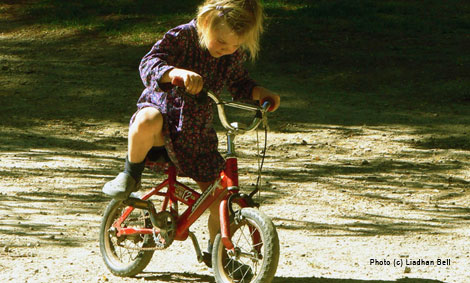
Bicycles, Shoelaces, and ABCs
By Liadhan Bell
It is about eighteen years now since I first fully embraced the notion of learning at home. There have been many lumps and bumps along the way and I have learned by experience that no two children are alike. What fills one with joy fills another with dread. What one finds simple, the other deems impossible.
As to methodology, I feel like someone I once read of who said “Once I had no children and seven theories on how to raise them. Now I have seven children, and no theories!” As with parenting in general, I have come to recognise the pattern: Just When You Think You Have It All Figured Out… Something Changes! There is always some new thing, or circumstance (or person, in the case of growing families!) being thrown into the mix. Nothing is static. The only thing constant and permanent is change.
I once lamented this. How on earth could I ever “get it right” if the definition of “right” kept changing? Surely there must be some constant in this never-ending state of flux?! It took a long while, and the benefit of experience to realize that perhaps I was basing my expectations on the wrong definition of “right”. Perhaps it’s not quite true that I have no theory of education. It can probably best be summed up thusly:
“Birds fly, fish swim, man thinks and learns.” ~John Holt
But of course, that is only the beginning of the conversation.
In my reading over the years, some things have really stood out. One of those things (I think I am correct in attributing to Doctors Raymond and Dorothy Moore) is the concept of the Integrated Maturity Level, or IML. Simply put, the IML is the time in a child’s overall development at which their senses, fine motor skills and cognitive function are optimal for them to be capable of the abstract thought processes and manual coordination needed to master basic academic skills. (Sorry… did I say simply put?)
One way to test if your child has attained this degree of readiness is if they are able to tie their shoelaces with their eyes closed, while counting backwards from 10. With this in mind it should come as no surprise that the average age this is attained is not five, six, or even seven. It is generally not reached until the age of eight or ten, and in many cases, even older.
Until this time, the Moore’s and other’s research indicates that it is not only counterproductive, but actually harmful to put a child under pressure to perform academically. (Their highly readable book, Better Late than Early covers this well, and also provides parents with plenty of ideas of what activities children might most benefit from and enjoy in the years before they are ready for formal academics. They have also outlined further research, in School Can Wait. Another voice on this subject in more recent times is research professor of psychology Peter Gray.)
Another favourite anecdote which made a lasting impression on me likens the learning process with its differing educational approaches of Starting Early vs. Waiting for Readiness to two farmers who wanted to build a fence at the end of winter. The first farmer, impatient to see results was out day after day chipping away at the icy ground, digging post holes. Slowly, over many weeks, with much hard work, he got the holes dug. His neighbour waited until the day the ground thawed, when he went out and dug all his post holes in one day. This powerful little analogy has always come back to me at times when I have felt pressured to ignore the wisdom of waiting.
So how does all this translate into our real life, here and now?
In our life learning journey, I have swung between living awestruck at the way my children are unfolding and growing before my eyes, and succumbing to the desire to recreate the artificial sense of security that comes from an outward structure with measurable results. For most of us this is how ‘success’ has been measured since we were big enough to hold a pencil.
As system after system I cleverly devised proved imperfect, I began to grow suspicious that perhaps there was no perfect system… As the years rolled by, peppered with ‘Aha!’ moments, I saw that undue pressure on my children produced resistance and discouragement, yet help and encouragement at the right time gave momentum to the inner drive to know and to succeed that children naturally possess.
I began to question my own motives. Would I quiz a kid (even ‘playfully’) on how to drive a car the same way I was secretly fond of quizzing them (‘playfully, of course!) on questions of basic mental arithmetic? The answer was obvious. Why would I quiz a kid on something that a) they were not developmentally ready to do, and b) they had no immediate practical use for? How often, I wonder, is it our undue emphasis on things children cannot yet understand that creates anxiety in them, blocking their ability to learn, leading to discouragement, and worse still, to avoidance and apathy…?
The opportunity to succeed at anything and the confidence this builds is so much more important than any artificially-imposed timetable of skills and abilities. We hear over and over that “every child is different.” But often we are not prepared to let them be too different if it challenges the generally accepted definition of “normal” or our own ambitions for our children to be exceptional.
Three of my daughters learned to ride bicycles just shy of their fifth birthdays. When I told one of them that I wasn’t able to ride until I was six, she quoted my own favorite encouragement for when they are learning a new skill. “Don’t worry Mum. People learn things at different times.”
On the other hand, I have no memory of learning to read. All I know is that I could read before I started school. One of my children has begun to decode words with apparently little effort. Her interest in being able to read is inconsistent and self-initiated, but noticeably gaining momentum as she sees that she can.
Another of them is not yet ready to read anything beyond individual letters, and her own and her siblings names (which she learned in a burst of enthusiasm a couple of years back!), but when she wanted to learn how to tie her shoes recently it only took a few attempts before she had it. She was ready! (And she had the added motivation of a very fancy pair of lace up sneakers!) I, however, was one of those poor, hapless kids who was still struggling to tie my own laces at her age, after a couple of years of trying. Every child is different.
So… though our future may not be mapped out in convenient compartments of What to Do When, and our present days may not fit into a box, one thing is certain: We are all constantly learning and changing and growing. It’s what people do. These children are amazing! They are brimful of creative ideas, little pearls of wisdom, and the joie de vivre. They put their minds to things and work hard and make those things happen. They take pride in their achievements and so do we. They are gaining the confidence that comes when you succeed in an endeavor of your own making.
They ride bicycles too. And tie shoelaces. And they will read. All in good time.
Liadhan Bell passionately believes that nothing will stand in the way of the thirst for knowledge when the right seeds fall on fertile ground. She has seen this time and again in her own life and the lives of her children. She knew from the age of seven, when she penned her first twenty page play, that she was a writer and writing has been her passion ever since. Academically-minded, Liadhan surprised most people who knew her when she had rather a lot of babies instead of pursuing a “higher” education. What nobody realized at the time was that her intense interest in children and how they grow would provide her with enough to write about for the rest of her life. She is particularly fascinated by the learning and creative process and in the synergy created when a family lives and learns together. Liadhan has seven children, aged 6 months to 21 years in 2016 when this article was published, and four adult stepchildren. In between keeping up with the adventures of their large brood, she and her husband Richard philosophize and write about life learning, Nature play, their experiences parenting two deaf children, and also recount their wobbly attempts at something like self-sufficiency at www.outtherefamily.org.
Copyright © Life Media
Privacy Policy
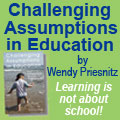 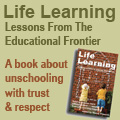 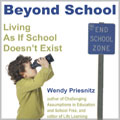
 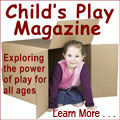 
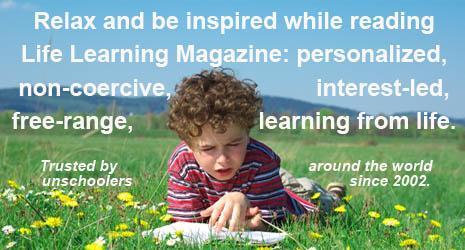
|

